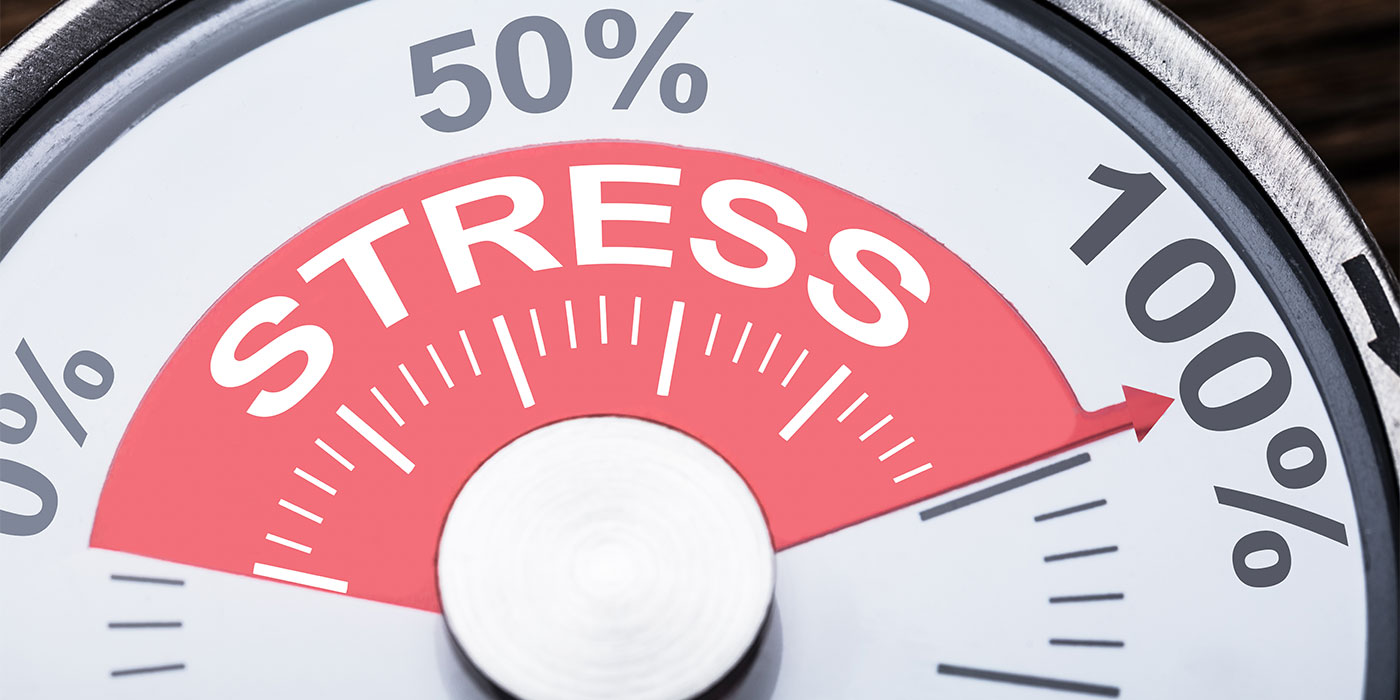The opportunities for automotive service technicians trained to repair today’s sophisticated vehicles have increased dramatically and, due to consumer demand and the advanced skills required to do the job, well-trained service technicians are a hot commodity. This is particularly true in the U.S. body shop industry, where numbers of entry-level techs are on the decline.
There are currently an estimated 800,000 full-time automotive technicians of all types employed in the United States. A study conducted for Universal Technical Institute shows that the average number of new technicians needed is 2.1 per dealer nationwide. The U.S. Department of Labor’s Bureau of Labor Statistics predicts that 60,000 new technicians will be needed each year, but only 40,000 are available, creating an annual deficit of 20,000 jobs in all the automotive fields. According to the Bureau, the need to replace experienced repairers who transfer to other occupations, retire or stop working for other reasons will account for the majority of job openings.
As difficult as the technician shortage has become for collision repair businesses, there is an upside – for the techs, that is. Due to the shortage of bona fide, qualified techs to repair collision-damaged vehicles, those with journeyman-level skills can command a premium for their labor. This is clear to any of you who’ve been in a position where you need technicians for your shop. Too often, it seems, shops feed off each other’s staffs, creating a situation in which pay rates increase dramatically due to competition for qualified techs.
“Repair shops are experiencing grave difficulties in attracting and retaining qualified personnel in an environment of inadequate labor rate reimbursement,” says Ed Kizenberger, executive director of the New York State Auto and Collision Technicians (NYSACT) and the Long Island Auto Body Association (LIABRA).
The answer, of course, to inadequate labor rate reimbursement is to raise rates. Unilaterally.
When asked to comment on the role of labor costs in determining the door rate, Kizenberger says: “My first day in college, my first class … the economics professor says no text book. … Here’s the entire concept for this class – supply-side economics: supply and demand. He was right then and still is. The more qualified the techs, the more they’ll demand. Technologies are making the auto more complicated instead of the other way around. This will pose a challenge for shop owners and, obviously, techs will ‘follow the money.’
“We can only hope insurers recognize this sooner than later and start raising rates to help shop owners provide a career path for tomorrow’s techs.”
While many collision repair shop operators will think their only option is to “hope” for a rate increase, the plain and simple truth of the labor marketplace is undeniable. That is, margins on labor sales can only be trimmed so far, at which point shops will have to become more proactive in terms of determining prices.
The days of signing bonuses, bird dog fees and other incentives for technicians to hire on to shops, while more common in years past, seem to have slowed somewhat. However, it’s generally agreed among shop operators that good help remains hard to find. This shortage also extends to mechanical service techs, impacting new car dealerships in terms of maintaining a trained staff in their service departments — which have, by the way, had no trouble demanding greater dollars for their labor. The reason for this disparity between the two sectors of the automotive industry is, of course, obvious.
What’s unclear is the inevitable cause-and-effect process on rising labor costs in relation to what should be a similar and proportionate rise in industry labor rates, into which third-party payers have substantial input. (Some would say the description of “substantial” is a gross understatement.) However, labor costs do have an undeniable effect on the price for which an hour’s worth of labor sells. On the other hand, in some markets, the hourly rates paid to techs approach the door rate charged to insured customers, when a commissioned journeyman tech’s weekly income is factored by one’s actual clock hours on the job.
What does all this mean to you? It means that, ultimately, shops are going to have to raise their door rates.
Click here to see technician turnover in the last 12 months
How We Got Here
What drives the tech shortage is the increasing demand for expertise among body shop workers. Once the Cro-Magnon mentality of the body shop employee of the ’60s and ’70s gave way to the requirement for more specialized and far more trained technicians of the 21st century, the shortage began to make itself felt. No longer could anyone with an air compressor, a roof and basic tools get into the collision repair business. The investment in equipment — and training — grew exponentially. The trade became more of a specialty with a unique skill set required, which presumably would yield a higher return on investment.
As the complexity of the tasks required of collision repair technicians increased, so too did their wages and, to a large extent, the decrease in availability of qualified techs. As ASE certification began to take hold in the industry, those techs with the expertise to be certified became that much harder to find.
According to the U.S. Bureau of Labor Statistics, median hourly earnings of automotive body and related repairers, including incentive pay (flat rate and commission), were $16.68 in May 2004. The middle 50% earned between $12.55 and $22.04 an hour. The lowest 10% earned less than $9.42, and the highest 10% earned more than $28.45 an hour. In May 2004, median hourly earnings of automotive body and related repairers were $17.73 in automobile dealers and $16.44 in automotive repair and maintenance.
While the statistics given are for hourly workers, the Department of Labor acknowledges that “the majority of body repairers employed by independent repair shops and automotive dealers are paid on an incentive basis. Under this method, body repairers are paid a predetermined amount for various tasks, and earnings depend on the amount of work assigned to the repairer and how fast it is completed.”
According to the I-CAR Education Foundation’s 2004 Snapshot of the Collision Industry, 36.5% of techs working today are ASE-certified. The average income of the top 10% in the industry earned $76,782 annually, certainly a respectable sum. In fact, research by ASE has shown that certified technicians earn substantially more than their uncertified peers in the collision repair industry. Those numbers, unfortunately, don’t coincide with higher door rates in most parts of the United States.
Chuck Roberts, executive director of Industry Relations for ASE, put together some numbers that correlated earnings for certified techs versus those without certifications. “We tried to look at the number of ASE certs a tech held,” he says. “We found a number of positive indicators in terms of productivity, performance, etc., and found earning potential increased per certification.”
It should be noted, however, that this research wasn’t specific to collision repair techs and included all automotive techs for which ASE offers
certifications.
Despite the earning potential for higher-end techs, both techs and shops are being shortchanged.
“There’s no question that the fictitious labor rates and outside pressures are going to continue to cause major challenges for shops,” says Lou DiLisio of Automotive Industry Consulting, Inc. “While the shops are forced to make do with far less, ultimately, the technicians are being shortchanged because there just isn’t enough left over after all other expenses are covered. It’s unfortunate that many insurers are so short-sighted they don’t see what’s happening around them.”
But perhaps insurers aren’t as short-sighted as it would appear. In fact, the insurance industry and their claims processing partners have long recognized the danger (to their bottom lines, of course) of the technician shortage, which explains why they underwrite I-CAR, training institutions and other initiatives to bring young, entry-level personnel into the field. This makes sense because they see what most repairers don’t — that the tables will eventually turn if the current trend doesn’t stem or reverse itself.
Is There a Shortage?
While most of the busier U.S. shops agree that there’s a shortage of qualified help in the industry, there are a few who dispute that notion. Mark Olson, COO of VeriFacts Automotive, LLC — a firm devoted to technician coaching, among other services — said to me at the I-CAR annual meeting in San Jose: “We don’t have a tech shortage.” He went on to explain that there’s more of a misappropriation of qualified techs in the industry, adding: “When you have a journeyman-level technician changing a wheel opening molding, it’s a shame.”
Olson also acknowledged the shrinking market and said, “We need to lose about half the shops in the United States.”
Bob Smith, owner of Storm Appraisal in Independence, Mo., and a familiar face (with his 10-gallon cowboy hat) at industry events and forums, agrees with Olson: “… I think we’ll see an overabundance of techs from shops that have failed flooding the marketplace. Some will have the skills needed to move on to another facility, some will not. Some will be trainable to new technologies, some will not. … There will be, in my opinion, more qualified techs than the [remaining] 20,000 to 25,000 shops … can use.
“I’m also a believer that the purse strings are only held as tightly by the insurance industry as what we in the repair industry allow. Everyone preaches that we must do what they want, that they’re the customer and that it’s their ball, their ballpark and their rule book. I don’t buy into that. It’s a bad analogy, I know, but if we as individuals are in a bad relationship, very few of us will let it continue. … We’ll end that relationship or figure out a way to correct it.”
Michael Giarrizzo — CEO of DCR Systems, a provider of turnkey body shop operations for new car dealers — also agrees with Olson, specifically about qualified technicians being
misappropriated.
“We haven’t experienced a shortage at all, but we do things fundamentally differently,” he says. “If there are 12 techs in our staff on the production floor, four or five are at the master level. The remaining seven or eight are support or lower level techs.
“We’ve found out at the master level or journeyman level that the workforce is ready for change … a large percentage are tired of fighting it out for billable hours.”
DCR implements a production line system with specialized labor performing specific tasks, much like an industrialized approach in a factory. For this reason, their operations aren’t as squeezed for master-certified techs. DCR also provides tools for their technicians, which eases the burden of entering the industry for beginning techs, promotes employee retention, ensures that every tech is equipped with the right tools, improves the effectiveness of training and promotes consistency.
With respect to tech compensation as a factor in rising compensation, Giarrizzo says, “As far as the effects on labor rates? I don’t know. … I think there’s a mindset in the insurance industry that there’s a ton of waste in our industry. Right, wrong or indifferent, they’re going to pay what they’re going to pay … and let the [repair] industry figure out how to get it done.”
Quality vs. Quantity
Regarding the cause-and-effect of higher earning among technicians, Gary Wano of Gary Wano and Son Auto Body, Inc. in Oklahoma City, Okla., says: “Actually, I don’t think it will be supply and demand that will increase the rates. As a matter of fact, I think that mentality is what will keep the rate low. As long as a man can load his iron and move every time another [shop] offers an additional quarter per unit, what enticement does a tech have to perform a quality job or even work toward tenure? I really think the only way the industry is going to see rate increases is through well-trained technical staffing, possibly even specialty training. If the insurer and consumer continue to be faced with quality issues — finished product as well as facility and equipment — what makes any of us think we’re even due a higher rate?”
Perhaps what it boils down to is the availability of quality certified techs, as opposed to an abundance of mediocre techs who appear as a result of the closing of marginal body shops.
Unfortunately – for body shop operators, at least – the trends show a steady decrease in repairable cars, despite the increases in population and cars on the roads. Where that leaves U.S. body shops in terms of workload is with a clearly diminishing supply of damaged cars to repair. That being said, the outlets for the repairs to be done, particularly with respect to those repairs that must only be done by certified body shops, are also limited by definition.
Nevertheless, the supply of qualified techs appears to be shrinking faster than the numbers of shops and the damaged vehicles in need of repair.
“[Shop] certification will definitely require shops to compensate for the additional equipment and training – just as a doctor is paid more than an intern,” says Smith.
“Experience and knowledge of correct procedures will command a higher value and justifiably so. I believe that, regardless of pressure to hold down labor rates, pure economics will make it through to some that things must increase, even on non-certified repairs. Techs who aren’t doing certified repairs will naturally see what their fellow workers are making and resist working for a lesser amount or resist doing the same amount of work.”
Analyzing the Situation
All that said, I personally believe the pool of qualified techs is shrinking faster than the collision repair market. I also believe that while shops are decreasing in number, there will be more specialized businesses operating in the industry, hence higher door rates.
What we evidently have here is a situation that threatens to turn on the creator of the problem. I recall saying to people that there’s nothing wrong with the collision repair trade that money won’t fix — that is, the dollars were the prime incentive for many who got into this business. While top earners in the industry are doing fairly well, the starting salaries and wages are evidently insufficient to lure young people into a trade that has lingering associations with a black lung industry.
Based on the shrinking number of body shops and the scarcity of qualified technicians to staff them, the attrition rate is running in excess of the decline of repairable wrecks. What we’re about to see is an industry beginning to look more like that of yesteryear, in which the body shops held more of an upper hand in terms of prices. These trends, however, have not manifested themselves to the extent that insurers are willing to pay whatever the cost is to repair their policyholders’ cars. Not yet, at least.
What’s happening is a thinning of the herd in which shops are feeding off each others’ human resources. The qualified techs — bodymen and painters alike — command a premium from employers. Those employers are presumably forced to raise prices to compensate, despite the general perception in the business that the providers of the services are helpless with respect to prices. The point is, the disparity between the cost of producing an hour of labor compared to what the hour sells for will eventually become too great for businesses to eat.
Imagine, if you will, your market, but with the tech shortage exacerbated to such an extent that you cannot fulfill all your customers’ demands due to the lack of qualified techs to repair the cars. And neither can your competitors. As the demand remains about the same, or even incrementally decreases as claims and losses decrease, the capacity of the collision repair industry to fulfill the demands of their customers decreases at a profoundly greater rate. That is, the relationship of supply (that’s the ability of shops to repair) and demand (the amount of cars requiring repair) reverses from one of an overcapacity to a situation few of us in the industry today have ever seen, i.e. one controlled overwhelmingly by the providers of repair services.
In this scenario, the shops hold the cards in the payer/provider game, or at least the quality shop operations with certified and trained technicians will. Consumer awareness is such that most owners of late-model cars (with an average cost approaching $30K) would never think of allowing anyone but a shop with demonstrable credentials to repair their cars – leaving the low-end shops focused on cosmetic repair and total repaints out of the picture to a larger extent.
As quality, trained techs become scarcer and leverage one shop against another, body shops will have no choice but to raise their door rates to compensate for their higher costs of labor. It may take a few years for them to realize that it’s possible and necessary, but the light will eventually come on in the industry’s collective head. It is, as they say, a matter of supply and demand.
Writer Charlie Barone has been working in and around the body shop industry for the last 35 years, having owned and managed several collision repair shops. He’s an ASE Master Certified technician, a licensed damage appraiser and has been writing technical, management and opinion pieces since 1993. Barone can be reached via e-mail at [email protected].













